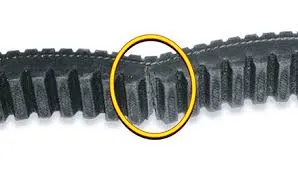- Arabic
- French
- Russian
- Spanish
- Portuguese
- Turkish
- Armenian
- English
- Albanian
- Amharic
- Azerbaijani
- Basque
- Belarusian
- Bengali
- Bosnian
- Bulgarian
- Catalan
- Cebuano
- Corsican
- Croatian
- Czech
- Danish
- Dutch
- Afrikaans
- Esperanto
- Estonian
- Finnish
- Frisian
- Galician
- Georgian
- German
- Greek
- Gujarati
- Haitian Creole
- hausa
- hawaiian
- Hebrew
- Hindi
- Miao
- Hungarian
- Icelandic
- igbo
- Indonesian
- irish
- Italian
- Japanese
- Javanese
- Kannada
- kazakh
- Khmer
- Rwandese
- Korean
- Kurdish
- Kyrgyz
- Lao
- Latin
- Latvian
- Lithuanian
- Luxembourgish
- Macedonian
- Malgashi
- Malay
- Malayalam
- Maltese
- Maori
- Marathi
- Mongolian
- Myanmar
- Nepali
- Norwegian
- Norwegian
- Occitan
- Pashto
- Persian
- Polish
- Punjabi
- Romanian
- Samoan
- Scottish Gaelic
- Serbian
- Sesotho
- Shona
- Sindhi
- Sinhala
- Slovak
- Slovenian
- Somali
- Sundanese
- Swahili
- Swedish
- Tagalog
- Tajik
- Tamil
- Tatar
- Telugu
- Thai
- Turkmen
- Ukrainian
- Urdu
- Uighur
- Uzbek
- Vietnamese
- Welsh
- Bantu
- Yiddish
- Yoruba
- Zulu
Th7 . 29, 2024 02:09 Back to list
Understanding the Importance and Functionality of Serpentine Belts in Automotive Systems
Understanding Serpentine Belts Their Use and Importance
The serpentine belt, often simply called the drive belt, plays a crucial role in the performance and efficiency of modern vehicles. As a flat, continuous belt that snakes around various pulleys, the serpentine belt connects multiple engine accessories to the crankshaft. In this article, we will explore the uses, benefits, and maintenance of serpentine belts, highlighting why they are essential for a well-functioning vehicle.
The Function of Serpentine Belts
The primary function of a serpentine belt is to drive multiple peripheral devices. These typically include the alternator, power steering pump, water pump, air conditioning compressor, and sometimes the fuel pump. By efficiently distributing power from the engine to these essential components, the serpentine belt helps maintain the overall operation of the vehicle.
Unlike older vehicles that often used multiple V-belts for these functions, the serpentine belt simplifies the system by allowing one belt to perform the work of several. This not only reduces weight and engine compartment clutter but also allows for easier installation and maintenance. Moreover, it minimizes the risk of belt failure, as a single belt being compromised could lead to a complete system failure, whereas in a multi-belt system, replacing one belt could often be a simpler affair.
Advantages of Serpentine Belts
One of the primary advantages of serpentine belts is their efficiency. The design allows for a more streamlined power transfer, which means less energy is lost through friction compared to traditional belts. This efficiency contributes to better fuel economy, as the engine does not have to work as hard to produce the required power.
serpentine belt use

Another benefit is durability. Serpentine belts are typically made from high-quality rubber infused with materials that resist heat, oil, and debris. These properties lead to a longer lifespan when compared to older belts, which often required more frequent replacements. Regular maintenance can further extend the life of the serpentine belt, making it a cost-effective solution for vehicle operation.
Maintenance of Serpentine Belts
Despite their durability, serpentine belts are not immune to wear and tear. It’s essential for vehicle owners to monitor the condition of the belt regularly. Signs of a failing serpentine belt include visible cracks, fraying edges, or a shiny surface, indicating excessive wear. Additionally, if you notice unusual noises such as squealing or chirping when the engine is running, it may be time to inspect the belt.
Most manufacturers recommend replacing the serpentine belt every 60,000 to 100,000 miles, but this can vary based on vehicle make and model. Consulting your vehicle's owner’s manual is crucial to understanding the specific maintenance needs of your car.
When replacing a serpentine belt, it’s advisable to also check the pulleys and other components the belt interacts with. Sometimes worn pulleys can cause premature wear on the new belt. In such cases, making adjustments or replacements may be necessary to avoid further issues.
Conclusion
In conclusion, serpentine belts are integral to the operation of modern vehicles, connecting various accessories and ensuring efficient power transfer. Understanding their function, benefits, and maintenance is vital for any vehicle owner. By keeping a close eye on the serpentine belt's condition and addressing any issues promptly, you can ensure your vehicle runs smoothly and efficiently for years to come. Regular maintenance not only enhances performance but also extends the overall lifespan of your vehicle's engine components.
-
Korean Auto Parts Timing Belt 24312-37500 For Hyundai/Kia
NewsMar.07,2025
-
7PK2300 90916-T2024 RIBBED BELT POLY V BELT PK BELT
NewsMar.07,2025
-
Chinese Auto Belt Factory 310-2M-22 For BMW/Mercedes-Benz
NewsMar.07,2025
-
Chinese Auto Belt Factory 310-2M-22 For BMW/Mercedes-Benz
NewsMar.07,2025
-
90916-02660 PK Belt 6PK1680 For Toyota
NewsMar.07,2025
-
drive belt serpentine belt
NewsMar.07,2025

